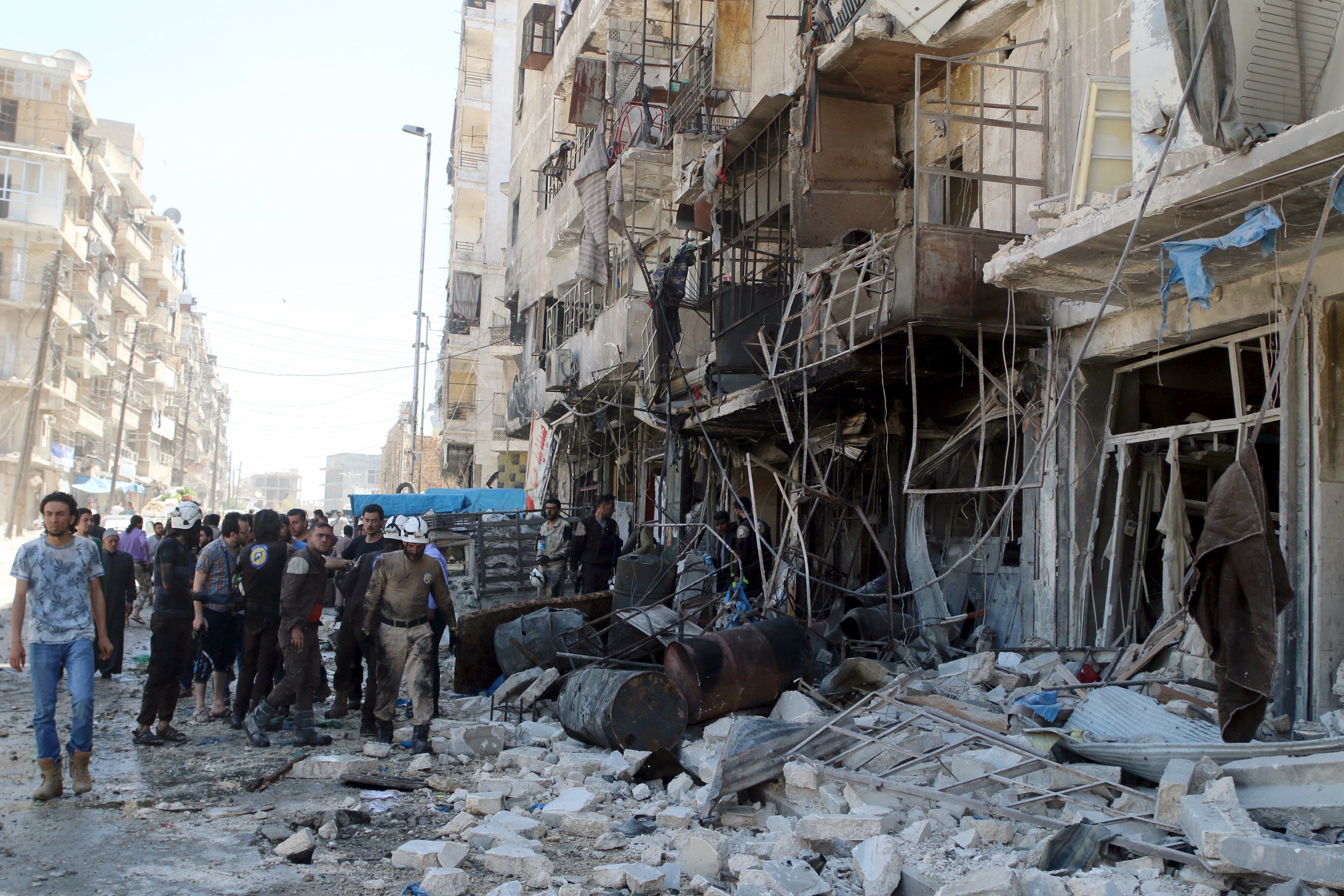
By Stephanie Nebehay and John Davison
GENEVA/BEIRUT (Reuters) – International aid convoys have reached two Syrian rebel-held towns near Damascus, marking the first delivery of food supplies to Daraya since 2012, after the government granted permission for the trips, the United Nations said on Friday.
Trucks from the United Nations and Syrian Arab Red Crescent brought a month’s supply of food for 2,400 people to Daraya, Jens Laerke, spokesman of the U.N. Office for the Coordination of Humanitarian Affairs (OCHA), said.
A separate inter-agency convoy entered Douma in rebel-held Eastern Ghouta near Damascus later on Friday, he said.
Any sense of relief inside Daraya was short-lived, however, because the food supplies would not last a month and the U.N. had underestimated the number of people living there at present, the local council and a monitoring group reported.
“They managed to get through all the checkpoints to get in there, deliver overnight, stock what needed to be stocked and provide food for the first time in years to people inside Daraya,” Laerke told a news briefing.
Malnutrition has been reported in Daraya, which is only 12 km (7 miles) from Damascus, where a first convoy with non-food supplies was allowed to enter on June 1.
U.N. mediator Staffan de Mistura, speaking to reporters on Thursday, said President Bashar al-Assad’s government had approved U.N. land convoys to 15 of 17 government-besieged areas in June. Air drops remain an option if the convoys did not move, he said.
Hussam Aala, Syria’s ambassador to the U.N. in Geneva, told Reuters on Friday: “Discussions are still going on about one pending location. The rest were all approved.”
Access to al Waer in Homs province was still under discussion, he said.
Health and hygiene items for Daraya’s estimated population of 4,000 were also delivered overnight and will be distributed by Red Crescent workers, Laerke said.
“However of course we call for unconditional, unimpeded and sustained access to all people in need,” he said, noting that 4.6 million people are trapped in besieged and hard-to-reach areas.
Some 1.9 tonnes of medicines for chronic diseases such as hypertension and diabetes as well as antibiotics, from the World Health Organization were on that convoy, spokesman Tarik Jasarevic said.
‘SUPPLIES INSUFFICIENT’
However, the government did not approve delivery of three burns kits that would have been enough to treat about 30 people with dressings and pain killers, rejecting them from the approved list, Jasarevic said.
There was also anger and frustration at the insufficient amount of food aid delivered, the Syrian Observatory for Human Rights reported. The British-based group tracks the war using sources on the ground.
It cited the Daraya local council as saying the supplies brought in would not last two weeks. The council says the population of Daraya is over 8,000, – more than double the U.N. estimates.
Council spokesman Hossam Ayyash said it was unclear how the aid, which would cater for only a quarter of the besieged population, would be distributed.
“Of course we are grateful to the team that brought in the supplies, but unfortunately they are not sufficient. We don’t know what decision will be taken (on how to distribute the aid), but it won’t be able to be shared out among everyone who’s here,” Ayyash said.
On Friday government helicopters stepped up their barrel bombing of Daraya, the Observatory and local council said.
(Editing by Robin Pomeroy and Hugh Lawson)











